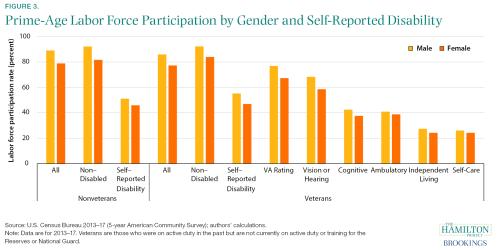From constant relocation and family separation, to changes in pay and benefits, America’s military families face unique challenges that civilian families often cannot comprehend. Because there is no alternative to hearing directly from military families, on Thursday, December 8, the Brookings Center for 21st Century Security and Intelligence was proud to host Blue Star Families—an organization dedicated to making the voices of military families heard—to discuss their annual Military Family Lifestyle Survey. The survey, which is the most expansive of its kind, is designed around the military’s priorities of recruitment, readiness, retention, and reintegration and serves as a key resource for policymakers, corporations, and nongovernmental organizations to understand the contemporary concerns of service members and their families.
A changing force
As the event’s featured speaker, Army Secretary Eric Fanning described how the armed forces look much different today than they did 50 years ago. “Our family policies are based on a 1950s family. And families have evolved radically,” Fanning noted. “I still go a lot of places where I hear the words ‘wife, wife, wife.’ We have a lot of husbands with husbands. We have a lot of wives with wives.”
Todd Weiler, assistant secretary of defense for manpower and reserve affairs, followed up in the panel discussion by asserting that, “We have to be a military that is reflective of the society that we serve, and that is what we are doing.” On top of the changing definition of who serves are changes in education and employment among military members and their spouses. More service members have college degrees than ever before, and increasing numbers of military spouses are employed in their own careers—despite the fact that 78 percent feel their partner’s service has negatively impacted their ability to pursue a career.
To address the concerns about family separation and relocation—which were listed as the second and third most stressful events of the military family lifestyle, respectively—Secretary Fanning recommended spreading out Permanent Change of Station (PCS) moves, which require families to relocate and children to enroll in a new school. He argued that officers shouldn’t have to move every year just to meet checkpoints in their careers, and specifically highlighted the Career Intermission Program (CIP) as a way for servicemen and servicewomen to take time off from active duty to pursue career or family needs.
The weight put on military families
Following Secretary Fanning’s remarks, a panel of experts from Blue Star Families, the Department of Defense, and Brookings discussed the survey’s findings and their implications for policymaking—especially surrounding the stress of constant relocation. Cristin Orr Shiffer, senior advisor for policy and survey at Blue Star Families, noted that 72 percent of military families “feel the current optempo [operational tempo] exerts an unacceptable level of stress” on families. Brookings Senior Fellow Michael O’Hanlon concurred, arguing that while the U.S. armed forces remain strong, they are tired—a result of frequent deployments and constraints on the military budget. Some on the panel recommended more efficient deployments as a way to alleviate some of the stress of relocation placed on military families.
Spouse unemployment or underemployment was another leading concern of military families, with over half identifying it as a top obstacle to their financial security. Compared to the two-thirds of American families who share two incomes, less than half (48 percent) of military couples have dual incomes. Of the 29 percent of military spouses not seeking work, many cite “family commitment” and “service member job demands” as the main reasons for not working, while still 21 percent of military spouses are seeking but unable to find work. Shiffer made the case for more affordable and accessible childcare as a way to give spouses who want to work the chance to do so.

As Shiffer also said, “it’s not all doom and gloom” for the military family. Spouse employment has continued to rise since Blue Star Families conducted their first survey in 2009. Concerns over veteran employment and retirement benefits have decreased drastically in recent years. But despite this progress, military families still carry much of the burden that comes with military service. Policy is still catching up to the modern family structure. And many service members express concern about the uncertainty about their compensation and benefits.
In her closing remarks, Blue Star Families CEO Kathy Roth-Douquet recalled why she spearheaded the survey in the first place: “We want to talk to our neighbors and tell them who we are and what we’re doing … [whether] they’re in the highest levels of government, or if they’re shaping opinions at the best think tanks, or if they’re just the person next door … If people don’t know us, they can’t help us.” The Blue Star Families survey brings the everyday challenges of military families to the attention of decision-makers, but perhaps more importantly, helps to bring military families closer to the American communities they serve.
Watch the full event here:
Alexandra DeFazio contributed to this blog post



Commentary
The force behind the Forces: New survey data on American military families
December 20, 2016